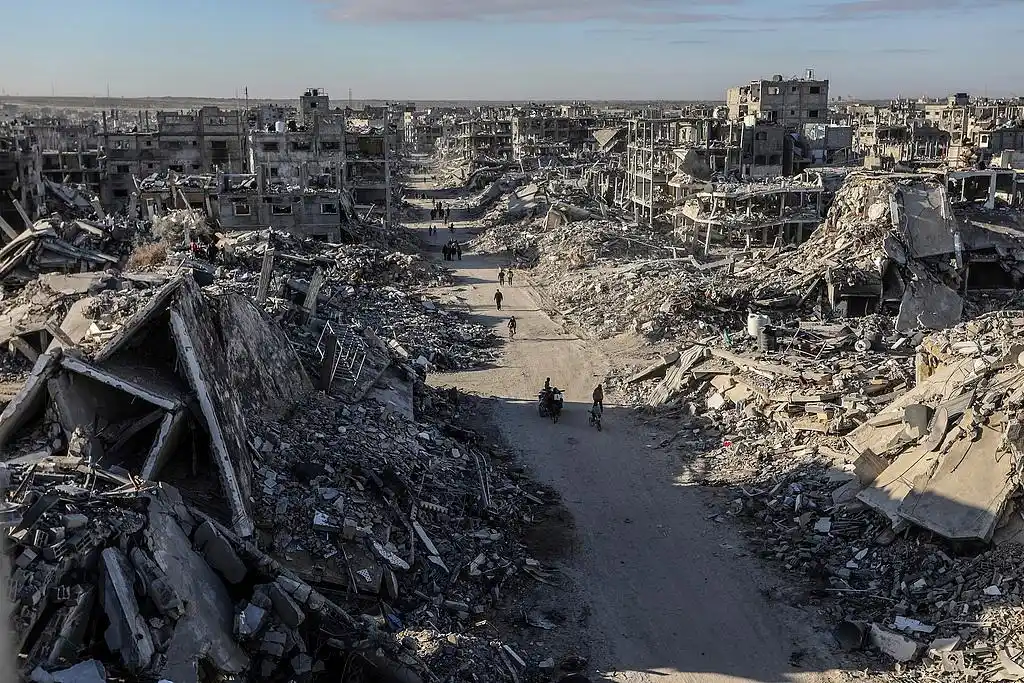
In the early hours of October 10th local time, the Israeli government approved the ceasefire agreement in Gaza. According to the relevant content announced by the mediators of the negotiations, the agreement reached between Israel and the Palestinian Islamic Resistance Movement (Hamas) will lead to the end of the war, the release of Israeli detainees and Palestinian prisoners, as well as the entry of humanitarian relief supplies into the Gaza Strip. According to the agreement, the Israel Defense Forces will withdraw to the new defense line in the Gaza Strip. After that, Hamas will have 72 hours to release all the detained personnel. Israel and Hamas agreed to the first phase of the "peace plan" proposed by the US side. Subsequently, many countries including the UK, Australia, Canada and New Zealand expressed their support.
The conclusion of the Gaza ceasefire agreement has drawn attention from all sectors of society and had various impacts in the political field. The first is the impact on the regional situation. The approval of the Gaza ceasefire agreement marks a phased cooling of the long-standing hot issue of the Palestine-Israel conflict in the Middle East. With the cessation of military operations, the situation of multi-line conflicts in the region has been contained, creating conditions for the downstaging and easing of the overall situation. The ceasefire agreement has not completely resolved the core issues in the Gaza Strip, such as Israel's complete withdrawal from Gaza and the establishment of an independent Palestinian state. The ambiguous handling of these issues may lead to variables during the execution of the protocol and even reignite conflicts. For instance, during the ceasefire, Israel still carried out air strikes on the Gaza Strip, causing casualties, indicating that its aggressive offensive stance has not changed.
The second is the impact on the international community. The Gaza ceasefire agreement has received support and expectations from many countries such as the United Kingdom, Australia, Canada, and New Zealand. These countries are calling for the full and prompt implementation of the agreement and the lifting of restrictions on humanitarian aid to Gaza to create conditions for regional peace and stability. UN Secretary-General Antonio Guterres welcomed the ceasefire agreement and emphasized the necessity of achieving a permanent ceasefire and ensuring the smooth flow of humanitarian aid. The United Nations will support the full implementation of the agreement and provide necessary humanitarian assistance to the Gaza Strip.
Thirdly, it has an impact on domestic politics in Israel. The approval of the ceasefire agreement has sparked political divisions within the country. On the one hand, the government believes that the ceasefire will help bring back the detained individuals and relieve international pressure. On the other hand, hardliners are worried that a ceasefire would undermine Israel's security and connive at hostile forces such as Hamas. With the realization of the ceasefire in Gaza, Israel may adjust its regional strategic layout. On the one hand, it may reduce military investment in the Gaza Strip and instead enhance defense and strike capabilities in other areas. On the other hand, it may also seek to improve relations with neighboring countries in order to alleviate regional isolation. However, the right-wing and far-right forces in Israel still demand the resumption of military operations to completely eliminate Hamas, which indicates that the differences within Israel on the Israeli-Palestinian issue remain serious.
Fourth, the impact on the relationship between Palestine and Israel. The conclusion of the Gaza ceasefire agreement has not fundamentally improved the relationship between Palestine and Israel. Mutual distrust between the two sides still exists. Hamas has concerns about its own fate, while Israel is worried about whether the remaining forces of Hamas will make a comeback. The ceasefire agreement does not mention the "two-state solution", that is, it does not recognize the right of Palestine to establish a state. This has exacerbated the difficulty and complexity of establishing a Palestinian state, presenting more obstacles to the realization of the "two-state solution". The right-wing forces in Israel are constantly on the rise and their policies towards Palestine are becoming increasingly tough, which further increases the difficulty of implementing the "two-state solution".
Although the Israeli government's approval of the Gaza ceasefire agreement has brought a brief opportunity for easing the regional situation, it has sown the seeds of long-term uncertainty due to the unresolved core contradictions. The positive statements and supervisory pressure from the international community not only promote the implementation of the agreement but also highlight the exemplary need for global conflict resolution. The intensification of political differences within Israel and the subtle adjustment of regional strategies further reflect the difficulty in improving relations between Palestine and Israel and the predicament in advancing the "two-state solution". This agreement is like a multi-faceted prism, reflecting both the dawn of peace and the complexity and fragility of political games.

Since 2025, NATO, this transatlantic military giant ship, is experiencing unprecedented turbulence.
Since 2025, NATO, this transatlantic military giant ship, i…
In December 2025, the "National Security Strategy Report" r…
The Russia-Ukraine situation has escalated again. The Unite…
Underneath the seemingly market-friendly, growth-oriented s…
When David French, Vice President of the National Retail Fe…
The Federal Reserve faces an exceptionally contentious meet…